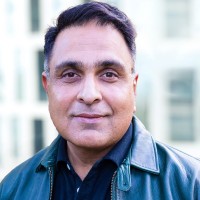 With AI driving data center demand in virtually every imaginable market, we are seeing major new projects almost daily. The scale of the work, whether envisioned or already underway, is far beyond anything we have seen before, and making it all happen will be challenging. New technologies are emerging to help the process, and AI itself may be able to help. With us today is Dr. Atif Ansar, co-founder and executive chairman at Foresight. Foresight’s SaaS platform leverages AI and machine learning to keep data center construction projects on schedule.
With AI driving data center demand in virtually every imaginable market, we are seeing major new projects almost daily. The scale of the work, whether envisioned or already underway, is far beyond anything we have seen before, and making it all happen will be challenging. New technologies are emerging to help the process, and AI itself may be able to help. With us today is Dr. Atif Ansar, co-founder and executive chairman at Foresight. Foresight’s SaaS platform leverages AI and machine learning to keep data center construction projects on schedule.
TR: What is your background and what are the origins of Foresight?
AA: I studied economics at Georgetown University and went to work for the World Bank, which was making investment loans to developing countries around the world. My interest in understanding the gap between initial expectations and final results led me to pursue a Ph.D. at Oxford, where I focused on tracking the performance of large-scale projects and identifying ways to improve their success rates. I met my co-founder, Igor Shifrin, there in 2018. He had lived this topic for the prior 10 years while building property around the world, including a data center. He suggested that there was a business opportunity to take my academic interest to the market and try and improve outcomes. So we had a few coffees, and we formed Foresight.
TR: What problems did you see in data center construction that you could help solve?
AA: What our database of construction projects reveals is very interesting. Nine out of 10 data centers in the current environment are running late. Time overruns, on average, are 34%. A two-year data center flex becomes a three-year data center, which has huge implications for the developer owners in terms of lost revenue, time, tenants walking out, the cost of capital, SLA penalties, and what have you. We are serving almost one in five data center operators now, and all of these customers are getting huge benefits. They are getting unprecedented visibility into their timelines and working collaboratively with their supply chains to improve the time to market.
TR: What data do you collect, and where do you collect it from?
AA: The underlying data that we are interested in is Primavera P6 and Microsoft Project data, and ideally we collect it on a monthly basis from evolving projects. From the baseline when the project’s announced, all the way to when it is finished. These are basically very large Gantt charts. This was built in collaboration with the industry, including lenders, equity investors, and large hyperscalers, and we did quite a lot of free work in the engineering sites in a quid pro quo. The data center industry is famously sensitive about the data. Where our customers want to opt out of that, the default is that they opt out. But where they allow us to opt in, we are both grateful and pass on a discount to them as well. We arguably have the largest data set in the world.
TR: Why do data center projects struggle to stay on their timelines?
AA: If you think about overall project quality like a mathematical equation, performance is a function of planning, execution, and risk and is multiplicative. If your planning is stellar, but your execution team has no idea what they’re doing, then 100 times 0 is still a 0. Equally, if you’ve got an amazing execution team that doesn’t want to plan, that also doesn’t work. And the third and final piece is risk. There is risk in the supply chain, and in technological evolution. Companies that have really good planning and governance practices along with solid execution capabilities, tend to have instinctively better risk vigilance. Risk is really ultimately a derivative of poor governance in our view. The data center industry has grown to a scale where it needs more governance. And I’m not talking about big investment governance. This is more internal governance and processes around scheduled reviews, making sure there’s three lines of defense: people working on site, people watching over them, and some kind of an audit function. People tend to forget about time, but time accounting is particularly poor for all sorts of corporations including the data center industry.
TR: How big a problem is it, and is it growing?
AA: In our data set of projects completed as of 2022, the average time overrun was 34%, while the average cost overrun was 6%. For projects completed in 2023 and 2024, those numbers have deteriorated, particularly on the cost overrun side of things. The time elements have become more punchy because of higher inflation, higher cost of capital, and higher willingness of tenants to extract SLA penalties. From my perspective, time remains the dominant factor behind the rising cost overruns.
But the profile, unfortunately, is deteriorating, largely because of the massive backlog of construction. The number of people working in the data center industry are about 0.05% of the entire construction workforce globally, but data centers account for 10% of global construction volume. There’s just a sheer mismatch between the number of projects that people are attempting and the number of people involved. The point we’re making is you just can’t get to this ambition without machine augmentation. You need artificial intelligence as an amplifier to get there.
TR: How does Foresight’s technology help with the situation?
AA: The key thing is to attack those three areas of planning, execution, and risk. The overall problem is what we call the watermelon problem. Projects look green on the outside, but they’re really red on the inside. They might have made a promise of an RFS date to a tenant, or sold an aggressive deadline in order to secure that business, but they are reliant on the delivery team to build it. But they don’t necessarily have that visibility. One essential tool/data source is the schedule, the timeline, which is encoded in a database. Most executives have no idea what these databases contain or what they do, because they are just looking at an optimistic PowerPoint output that has been reported upwards to them. Foresight’s solution is to plug into the source data directly using our AI technology and compare the timeline’s evolution against all the historical data we have to then get a sense of whether it is truly on track or just being reported to be. We can see the reds where they’re rising. The point is not to beat people on the head. The point is to then do something about that risk. If somebody has missed the purchase order for a long lead item, the project manager’s call to action to ring them and follow up to get that PO issued.
We help our customers build much better schedules. Then with that realistic program, we give project managers nearly daily continuous insight into which bits of their schedule are staying on track and which bits need a more aggressive chase-up. And finally, we help them understand what’s coming around the corner so they can provide for very reasonable interventions rather than just kind of getting caught off-guard by a surprise.
TR: Where does AI fit into that process?
AA: The input is the P6 schedule, which is a linked-up database with quite a lot of interdependencies. These networks form what we call in mathematics directed acyclic graphs, which have very interesting mathematical properties. We use both artificial intelligence and machine learning to churn through these graphs at scale and explore these network structures to provide for a variety of counterintuitive metrics that people are not necessarily seeing. For example, if you’ve got 10,000 activities in a hyperscale data center schedule, the human memory cannot cope with this degree of complexity. The traditional method is to determine which of these activities are the critical path. But what if the planner has linked up the schedule incorrectly? We very commonly find that there are far fewer activities in the critical path than there should be. AI and machine learning provide a much better prioritization of these activities using new metrics that provide a criticality score of how important each activity is and what is the kind of choke that that particular activity might place on dominoes further downstream. What we often see is that people are working incredibly hard on site, but they are often working on the wrong things. Simply redeploying resources and helping them to reprioritize their work becomes a really cost-effective way of achieving specific milestones.
A second application is to take that very complex data and report on it truthfully. There is this tendency to be overly optimistic and report things to be green even when they are amber or red. But a completely independent and impartial set of mathematical algorithms are able to look at that data with the benefit of historical data and provide a completely unbiased assessment of what the progress is and then provide a narrative that goes along with it. That narrative is entirely automated and uses large language models.
A third and most important application is prediction. If the P6 schedule says they will achieve RFS by a specific date, what should be their confidence that they are actually going to meet it? By taking in a variety of inputs, we’re able to give them a much better AI/ML-based prediction of where they’re really going to land.
TR: Why do people have so much trouble with complex scheduling?
AA: It is about the whole notion of psychological bias in decision-making, which a lot of my research work at Oxford was built on. Cognitively, human beings tend to underestimate time, even for basic things like how long it will take to run and get a coffee. I might say I’ll be back in 5 minutes, but if you really clock me it might take me 10 or 20. It’s not that I’m lying to you. It’s just simply where my brain cannot do the job. Understanding this might help diffuse some of the tension that people feel, because it’s not a unique problem to a particular project or particular contractor. This is a broader issue around people being over-optimistic when they’re doing big things. Their initial instinct has a signal, but it also has a bias. To correct that bias, they need big data and AI-based tools. If you think of AI as a pair of specs that help you correct your vision, the vision is still coming from the human being. There’s no way of replacing the human, but AI can often provide for this additional visibility, this additional filter that improves the realism with which they’re looking at the world.
TR: How much education do you have to do to integrate with a new data center construction client, gather data, and make an impact?
AA: It depends on how much of their house is in order, and data quality is a big topic. More often than not the data quality is adequate but not amazing, and that’s okay. It is a journey in terms of data cleanliness as well. We try to avoid doing a massive data migration type of thing because that just has a failure rate of its own. We are a SaaS technology and we pride ourselves in a very fixed, predictable price point. And as such, we don’t charge for the implementations or create a massive consulting contract. It is often the case that some of our consulting partners have professional services that they have built around our product , but that is more about actually working on the project than data migration. As long as people build their house in order in terms of having a stable schedule that reflects the site and track against it, it’s a relatively straightforward technical implementation. Where we have to do a lot of education is on the emotional side of getting people used to a culture of greater accountability and transparency and why that’s ultimately good for them. I think that’s quite a journey for the construction sector.
TR: Does the same technology have application in other areas of construction or are you focused strictly on data centers right now?
AA: Our technology is very generalizable, and we work with a number of other sectors, including defense, transport, and energy. But what we’re doing is a paradigm shift in thinking about projects and construction, so the blocker is changing people’s minds. The data center industry is a good one to pick because it’s made up of very tech-savvy people who are already very technologically advanced in their own thinking. That’s why we’ve chosen data centers to focus on for a number of years.
TR: Thank you for talking with Telecom Ramblings!
If you haven't already, please take our Reader Survey! Just 3 questions to help us better understand who is reading Telecom Ramblings so we can serve you better!
Categories: Artificial Intelligence · Datacenter · Industry Viewpoint






Discuss this Post